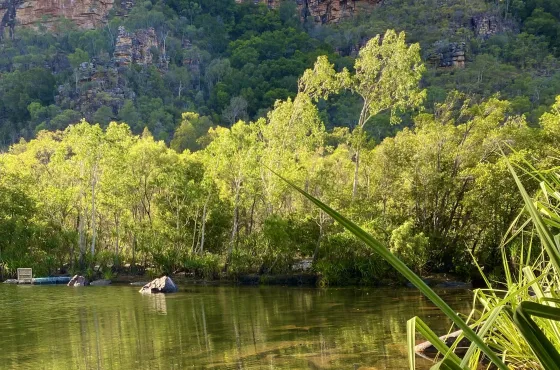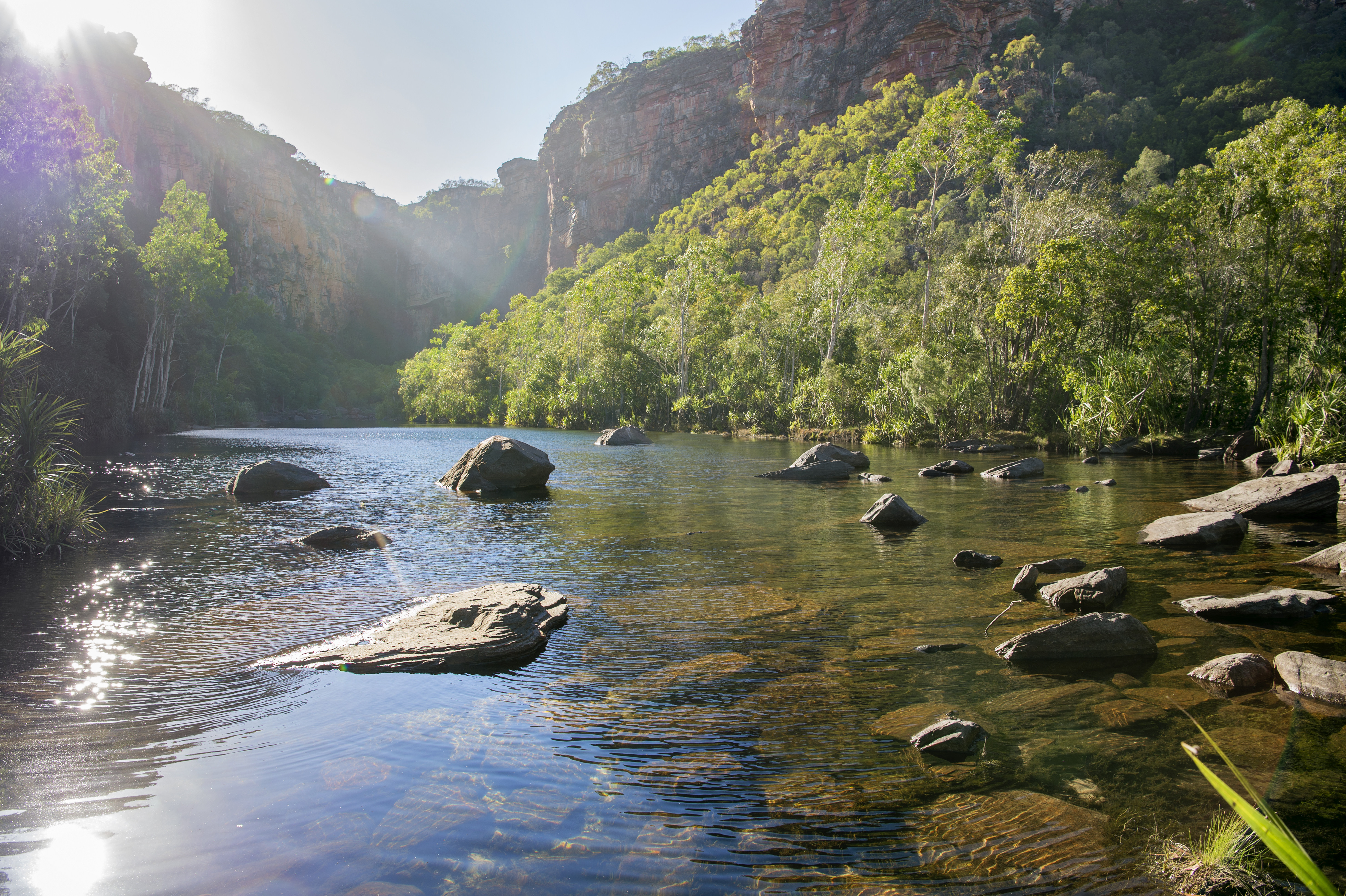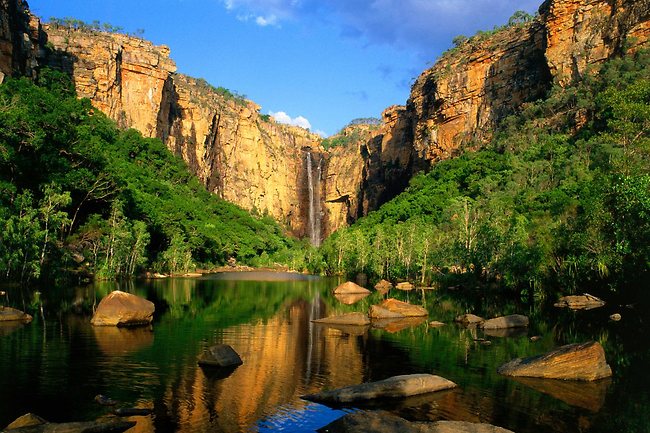
Jim Jim Falls Re-Opens
Jim Jim Falls is one of Kakadu’s tourism icons. During the wet season, an aerial tour over Jim Jim and the neighbouring Twin Falls is one of the ‘must do’ experiences. The force of the water coming over the escarpment and the spray it deflects skyward is truly awe-inspiring.
Access by road is almost impossible during the wet, but from May or June each year through to November, visitors can test out their 4WD skills along the well-kept 50km outback track on their way to discovering the oasis that is just 900m from the carpark.
It’s always fascinating to hear the derivation of names that Europeans have attributed to Kakadu landmarks. The name Jim Jim comes from andjimdjim, an Aboriginal name for the water pandanus that line the creek leading to the falls.
The short – but still occasionally scrambling – walk to the pools takes you through a large anbinik forest that provides cooling shade even in the heat of the day. These are the largest trees of the escarpment country and are among some of the oldest species of vegetation on the planet, dating back over 400 million years.
Keep an eagle eye out for eagles and falcons, but also honeyeaters and the striated pardalote, which you might be able to spot in the canopies of the trees.
The walk does mean some scrambling over boulders, but you’ll get to see water monitors sunbaking on a boulder after chasing their lunch through the clear water of Jim Jim Creek.
Importantly, Kakadu National Park rangers clear the area of any potential crocodiles after the wet season, which is why you generally can’t swim till June. The information centre at Bowali can always provide an update, as can the Access Report (hyperlink to https://parksaustralia.gov.au/kakadu/access/) updated continually by the Park.
So what’s all the fuss about?

After the walk, a massive rock pool – possibly 300 metre diameter – awaits, surrounded by massive cliffs and sandy beaches carved out over millions of years.
While the waterfall diminishes to a trickle during the dry, it feeds a glorious swimming hole that teems with fish. Make sure you bring a snorkel or goggles to view the fish below.
In fact, bring a picnic hamper and spend a lazy morning and afternoon there.

Jim Jim falls is just over an hour’s drive from Cooinda, and 90 minutes from Jabiru. You will need a 4WD with high clearance, and the road can become corrugated towards the end of the dry season, but after a whole lotta shakin’ going on, the end result is worth every jolt.
For the more adventurous, the Barrk Marlam walk is a 6 km return rugged ascent to the top of the escarpment above Jim Jim Falls.
The views are spectacular, but the walk is only for those who are experienced and fit – and best done early in the morning, as the return trip can take between four and six hours, depending on your fitness level.
The Baark Marlam walk branches off from the Jim Jim Falls plunge pool track. You walk through the rugged stone country typical of the Arnhem Land plateau, and if you keep a sharp eye out, you will discover why it is named ‘Baark’, because that’s the local name for the black wallaroo, a small wallaby-sized macropod only found in Kakadu.
Kakadu Tourism’s Spirit of Kakadu 4WD Adventure Tours, which is based at Cooinda, often includes Jim Jim Falls in their fully-guided itineraries. Contact them for full details at Spirit of Kakadu Adventure Tours
Full details: Parks Australia - Jim Jim Plunge Pool Walk
Where to stay and what else to do in Kakadu: www.kakadutourism.com




